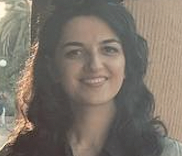Our
Mission
Women in Computer Architecture (WICARCH) is designed to create a community for women studying and working in the field of computer architecture. Our goal is to promote women in computer architecture and increase visibility for their research and development contributions. We welcome participation from all women including students, post docs, industry researchers and developers and faculty members. To be listed in our directory, please click here.
Profiles of WICArch
The mission of this section is to profile women in computer architecture across many walks of our field, from [junior, senior] x [industry, academia].
If you would like to be profiled, would like to nominate someone to be profiled, or would like to write a profile, please let us know by wicarch-chair@acm.org
Mengjia Yan

Dr. Mengjia Yan is undoubtedly one of the most delightful people you will ever meet – smart, positive, exceedingly wise beyond her years, and the kind of person who can turn a frown upside down. She was paired with me as a mentee at ISCA 2018, but I genuinely think that it is I who have benefited from the relationship. These days, she is a new assistant professor at MIT, having recently completed her PhD at the University of Illinois at Urbana-Champaign in 2019.
WICArch Directory
We actively maintain a list of women working in the field of computer architecture. The goal of this list is many-fold. First, the list services as a resource for program chairs and conference organizers to identify women to serve in key technical roles such as keynote, panels and program committees. Second, the list is designed to foster community and help women connect with other women in computer architecture. This list can be used by current and potential graduate students to find advisors and mentors. Four profiles, selected randomly, are shown below. We encourage you to browse the full directory.

Geeta Patil
Faculty
BITS Pilani
(No URL)
I recently finished my Ph.D.
My research interest is in computer architecture.
Evaluation and Measurement Of Real Systems, Instruction, Thread and Data-Level Parallelism

Hanieh
PhD Candidate
University of Southern California
(No URL)

Lisa Wu Wills
Clare Boothe Luce Assistant Professor of Computer Science and ECE
Duke University
Personal URL

Ghazal Tashakor
Scientist
Jülich Supercomputing Centre
Personal URL
Dr. Ghazal Tashakor is a scientific staff member affiliated with multiple institutes and universities in Germany and Spain. She obtained her Ph.D. in High-Performance Computing (HPC) and advanced simulation from the Autonomous University of Barcelona in 2019. Her ongoing research endeavors primarily focus on conducting large-scale computer simulations. Additionally, she serves as a core developer in distributed and parallel architecture patterns, ranging from grid computing to data visualization/monitoring, with a specific emphasis on Big Data and advanced hierarchical models. She collaborates with various research centers in Germany, including Fraunhofer and Jülich Supercomputer Centre.
Architectural Support For Programming Languages Or Software Development, Architecture For Emerging Technologies and Applications, Architecture Modeling and Simulation Methodologies, Datacenter-Scale Computing, Instruction, Thread and Data-Level Parallelism, Iot, Mobile and Embedded Architecture, Multiprocessor Systems, Processor, Memory, and Storage Systems ArchitectureInitiatives
We organize various initiatives to better connect women in computer architecture.
Join Our Mailing List
2. Update your gender in your myACM account (create/activate account as needed)
Join Our Slack Channel
We offer an informal mentoring program through our slack channel (wicarch.slack.com). Women at all career stages are encouraged to join. The mentoring program provides an easy way to connect with other women and receive advice on a wide range of career and personal issues.
If you need assistance in joining our mailing list or slack channel, please send email to wicarch-chair@acm.org.
This website serves women in the field of computer architecture.
© 2021 SIGARCH.
